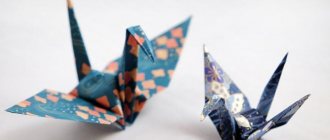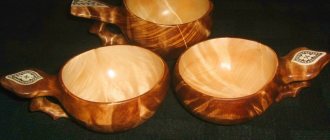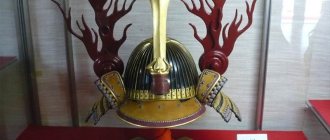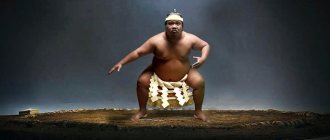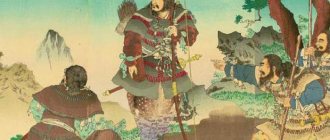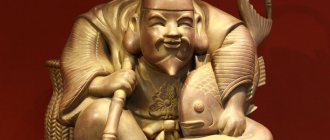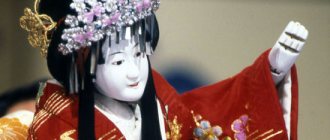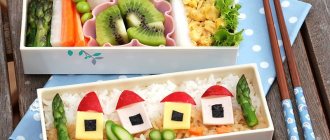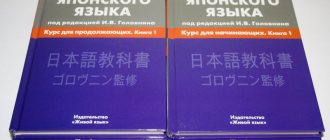Principles of Kyudo
Kyudo classes are conducted without distinction of gender and age; you can start practicing this sport at any time in your life.
Kyudo may be practiced for the purpose of meditation, but most athletes practice kyudo for the purpose of learning shooting as a sport. The main principle of kyudo is to adhere to nobiai, which results in the most natural shot resulting in a hit. Therefore, many shooters consider it especially important to participate in various competitions and, in general, any opportunity that allows them to improve their technique.
Video: Kyudo - traditional Japanese bow shooting
The Art of Archery
Kyudo is considered a traditional martial art. In the middle of the twentieth century it was transformed into a sport. Kyudo appeared during the Mongol invasion of Japan. Then the first shooting schools began to be created. Much attention was paid to the education of the spiritual personality of the warrior. Therefore, for the Japanese, kyudo is also a way of life. This art was greatly influenced by Zen Buddhism.
Japanese archery has become a special ritual. It differs significantly from traditional European technology. When shooting, most of the bow is under the palm holding it. The diameter of the target is 36 cm. The distance to it is 28 m. The master must comply with all forms and rules of kyudo. This is much more important than hitting the target with an arrow. In Japan, 500 thousand people practice this martial art. Since ancient times this state has been called the Land of Long Bows.
They started learning to shoot from childhood. The future archer held a heavy staff in his outstretched hand, gradually increasing the time. Yumi was made from cheap natural materials. Therefore, the Japanese longbow was the most accessible weapon.
How the room for Kyudo is arranged
Dojos for kyudo vary in the styles involved, depending on the kyudo school and the country in which the training takes place. In Japan, most dojos consist of an entrance at the rear or right in the direction of fire, a main area lined with wood with a ceiling over four meters high, a large open-air intermediate area, a designated target area, a matoba located 28 meters from the main area, separate places to accommodate judges or spectators who are on the right in the course of shooting, rooms for practicing makiwara shooting, which is not a mandatory component.
Bow length
The choice of bow depends on the height of the owner.
| Height | Boom length | Recommended bow |
| Sansun-zume (212 cm) | ||
| 150-165 cm | 85 - 90 cm | Namisun (221 cm) |
| 165-180 cm | 90 - 100 cm | Nisun-nobi (227 cm) |
| 180 - 195 cm | 100-105 cm | Yongsun-nobi (233 cm) |
| 195-205 cm | 105-110 cm | Rokusun-nobi (239 cm) |
| > 205 cm | > 110 cm | Hassun-nobi (245 cm) |
Sterles for Kyudo
Arrows for kyudo are traditionally made from bamboo, and the plumage is used from hawk or eagle feathers. Nowadays, many kyudok use arrows made of aluminum and carbon fiber with feathers made from turkey or swan feathers. The length of the arrow is determined individually for each athlete; the size of the arrow should be the distance from the middle of the throat to the fingers of the left hand held horizontally to the side. Arrows can behave differently in flight - bend, rotate, which depends on what part of the bird the feathers were taken from. If the arrow rotates clockwise in flight, it is called haya; if it rotates counterclockwise, it is called otoya. The set of arrows consists of 6 arrows, of which three are haya and three are otoya.
Form
Arrow carrier
The Yumi is an asymmetrical bow, with the handle positioned approximately one-third of the length of the bow at the bottom. There are several hypotheses for the origin of this form. The main hypothesis is that this shape is necessary for shooting from a horse with the ability to freely aim in any direction. According to another hypothesis, this form is needed for shooting from a sitting position. There is also a hypothesis that this form arose in times before the invention of the composite bow to compensate for differences in the properties of wood at a distance from the root. Without a string, the bow bends in the opposite direction
Glove for Kyudo
Also for shooting you need a glove for the right hand, kake , which can be hard or soft. Kake also differ in the number of fingers on which the glove is worn. It can be worn on one thumb or on all five. The most popular gloves are worn on three or four fingers. An additional cotton shitagake is worn under the glove to protect the hand.
Use in combat
Yumi is irreplaceable in any natural conditions. It was used in naval battles, for the defense of coastlines, mountain ranges, and forest ambushes. An experienced archer on horseback easily dealt with a group of infantrymen. The convenient shape of the bow allowed it to shoot in any direction by sharply turning the body. Such an activity was common for noble samurai. To neutralize the war with the bow, it was necessary to kill his horse. Less wealthy Japanese became foot archers. They were used to storm castles and other fortifications. The wars lined up in several rows. Each line fired arrows in turn while the other archers prepared. This made it possible to rain down a continuous hail of arrows on the enemy. With the invention of muskets, the effectiveness of using horse archers became minimal. But the samurai did not stop practicing this art. Huge shooting ranges were created at their residences, where competitions were held. Yumi was also used for hunting. The killing of a deer by a horse archer was a rare event. In this case, a messenger was sent to the samurai family with a message.
Protect muneate
The athlete's chest is protected from the blow of the bowstring by the muneate, which is more necessary for female athletes and beginners. With the correct approach to the bow and firing the shot, the bowstring cannot touch and injure the chest.
Video: Horo's Protective Cloak
Japanese crossbows: stepchildren of the Land of the Rising Sun
So, any professional warrior was obliged to wield a bow one way or another, remember “A samurai without a yumi is like a samurai with a yumi, but only without a yumi...”. The crossbow found itself in a kind of corral, as evidenced by obvious and not so obvious facts.
Firstly, the number of modifications is extremely small. With the exception of the serf ballistas o-yumi (i.e., “big bow”), there is actually only one model - the teppo-yumi. And some oddities are noticeable in relation to her. Look, “teppo” in Japanese means “gun” (this is what the first arquebuses received from Europeans were called). That is, it turns out that the name itself arose after these not so long ago events, not earlier than the middle of the 16th century. At this time, Europe, not to mention geographically close China, had been using crossbows for hundreds and thousands of years.
Although there is evidence that crossbows came to the islands in the form of Chinese gifts back in 618 AD. t have been used quite actively for several centuries. However, the gradual stabilization of the state led to their almost complete oblivion. I couldn’t find a single sample of Japanese paintings, there are as many bows as you like! Therefore, based on historical realities, I will present an image of a Chinese serf easel crossbow (ballista), and a very unusual trumpet design. I don’t think that the Japanese versions were any different from the overseas prototypes.
Secondly, teppo-yumi are a rather primitive design, especially for this historical period:
Compare it with the authentic “death machines” of the last legionnaires of the Middle Ages - the Genoese mercenaries:
It seems that teppo-yumi with a stock and a shoulder span of approximately 60 centimeters did not have outstanding shooting characteristics and were not used very often on the battlefield. Maybe some ninjas worked among them for colleagues from hostile clans or unwary samurai. And even then at short distances from an ambush.
Or maybe there was a subjective factor. If in Europe they have repeatedly tried to ban crossbows as “weapons of the devil,” then why shouldn’t a samurai consider them incompatible with the codes of Bushido? That is why the islanders, who adopted so much from the Chinese, reacted to overseas crossbows without enthusiasm.
By the way, about borrowing. It is interesting that, albeit in tiny quantities, almost complete copies existed in Japan:
These store devices were called “dokyu”. In Russian, this is a kind of palindrome (the word is the opposite, like GROM - MORG) from “kyudo” (Way of the bow). Unfortunately, we do not know how the names of crossbows were written in hieroglyphs, otherwise we could speculate on this topic.
More about the history of weapons:
Hunting weapon. From the Middle Ages to the Twentieth Century Blackmore Howard L.
Japanese bows
Japanese culture developed under strong Chinese influence. Intense cultural and trade ties between the two countries began to develop during the Tang Dynasty (618-906 AD), which brought peace and prosperity to the country, and could not but affect the design of various types of weapons. Thus, ancient Japanese swords show clear similarities with products from Northern China and Korea. A poem by the Japanese Empress Suiko (593-629 CE) praised “the ornaments from the province of Hega; as for sabers, the best were the good blades from Kure (China)!” Numerous stories about the exploits of Chinese archers have been preserved in Japanese folklore. They shot down geese flying above the clouds, aiming only at the cry of the bird.
Most ancient Japanese compound bows are similar in design to Chinese designs. The Imperial Treasury in Tokyo contains a pair of huge silver kettledrums, dated March 8, 767, and covered with engraved images of horse archers hunting boar and deer. They use compound bows with long "ears" of a distinctly Asian type.
Some collections contain several solid long straight bows made from catalpa or tsuqui wood and dating from the same period. Some bows still have traces of binding. In 764, the storage facility contained about a hundred bows made from euonymus and other types of wood.
As the influence of the Tang dynasty weakened, the Japanese began to strive for originality in the manufacture of almost all types of weapons, until they finally focused on long, thin bows made of bamboo. Mongol invasion 1274-1281 led to the emergence of more powerful and shorter compound bows that were common on the continent, and in subsequent times the Japanese continued to make bows of this type.
Archery training was considered a mandatory part of the education of a member of the nobility, primarily training skills in shooting from a moving horse. Even after the spread of handguns, the bow continued to be considered as the main hunting weapon and was perceived as such until the second half of the 19th century.
Japanese bows varied little in length, but according to their design they can be divided into five main groups:
maruki – flat wooden bows;
shigetoyumi - bows wrapped in rattan;
bankui - guard bows;
hankui - shortened bows;
Hokoyumi - bows for shooting darts.
The first two varieties are considered typically Japanese, being long and graceful in shape, 7 to 9 feet (2 to 2.7 m) in length (Fig. 58). They were usually up to 1 inch wide, had a circular cross-section along their entire length, and were almost undecorated. Shigetoyumi, or compound bows, were made from planks of some deciduous tree (mulberry, sumac, or cherry) reinforced with strips of bamboo, the bark forming the outer side. This three-layer bow was strengthened with rattan rings. Like the sword, the bow had its own name and was the subject of a special cult.
When the bowstring was pulled, the bow acquired a slight curvature. The distinctive features of the Japanese bow also include the position of the grip, which was placed not in the middle, but about a third of the length of the bow from the bottom, thus adapting to the short Japanese archer, who shot from the back of a horse or from his knees. Above the grip was one of the rattan rings (nigiri), which was used as an aiming device.
The bankui bow was about half the size and was used primarily for shooting from the back of a horse. The same group included hankui, or ceremonial guard bows, which mainly had decorative rather than practical use.
The most complex in design was the hokoyumi, which was an improved version of the ancient Chinese compound bow. Often it was reinforced with metal plates. It was used to shoot small darts (yumiyari) approximately 3-4 inches long. To prevent the bowstring from jumping off when fired, special notches with horn linings were made at the ends.
Since longbows were easily drawn to the ear, which was in keeping with Japanese tradition, Japanese arrows were much longer than European ones and had large tips that looked little different from dart tips.
There is probably a certain amount of truth in the stories about the giant archer Tamitomo (1139-1170), who used a bow 8 feet 9 inches (more than 2.5 m) long. It is said that he sank when he was loaded into a small boat with only one heavy arrow. Made of metal, Japanese arrowheads (yanone) came in an incredible variety of shapes and sizes (Fig. 59), and yet they can be grouped into four main classes.
Togari-ya - in this class of arrow heads there is a wide variety of shapes from long pointed peak-shaped heads to wide flat heart-shaped heads. Most of them were covered with carvings.
Yanagi-ha - the most common form of arrow heads, a rough copy of a willow leaf, shapes and proportions varied significantly, length varied from 3
/
4
inches to 2.5 inches.
Karimata is a head similar to the European type with fork-shaped, sharply sharpened teeth. The width ranged from 1 to 6 inches.
Watakushi is a lanceolate head with reverse teeth. The literal translation of the name is “tearing flesh,” because this head could cause a serious wound.
Rice. 58. Japanese archer. Based on an engraving by Morikuni (1729). Note the longbow, which is rotated in the hand so that the string rests on the back of the wrist
Within the four types listed, there were many options that had their own names. Thus, among the Togari-ya there is an arrow head called rinsetsu (dragon tongue). Note also the omodake (water plantain), which caused severe injuries. Large arrow heads were covered with exquisite patterns and poetic lines. They were obviously intended as offerings.
We do not describe kabura-ya - wooden arrows with a thickened head with holes that made a whistle in flight, since they were not used for hunting. At the same time, let us pay attention to the kihoko - a flattened wooden head used in hunting dogs (inuoi) - a disgusting entertainment introduced in the 12th century. Emperor You. During the hunt, the dog was released inside a fenced area, where it became a target for mounted hunters moving around the perimeter.
To accommodate such a variety of types of arrows, a huge number of varieties of quivers were developed, many of them distinguished by elegant decoration and intended for officials, guards and parades. A hunting quiver (kari-yebira) was a box woven from thin bamboo, filled with arrows. For greater strength, the bamboo base was covered with wooden planks. Another type of hunting quiver depicted in numerous portraits of hunters is the utsobu - a cylindrical box covered on the outside with fur or leather with a hole in the front at the bottom. One of the shortest Japanese bows was made from whale bone and was only 2-3 feet long, often carried in an open lacquered roman case along with arrows.
Note that Japanese archery techniques were very different from Chinese ones. The bow had to be held lightly, “as if afraid of breaking an imaginary egg,” so that after the shot it swung violently, and the bowstring could quite noticeably hit the left hand from the back.
Japanese archers were constantly in search of techniques for perfect shooting and delicate control of the bow, which was reflected in the shooting instructions, which stated the following: “The bow should never know when the arrow will be released... the archer himself should not know when the arrow will fly out... such the shot is believed to cause only a long sound behind it... the arrow moves as easily as breathing, and really seems alive.”
Rice. 59. Japanese arrows. Top row: two fork-shaped heads (karimata), heart-shaped spear heads (togari-ya). Bottom row: two willow leaf heads (yanagi-ha), three-pronged (watakushi), thickened head (kihoko)
The Japanese also used the Mongolian arrow shooting technique, when the thumb ring was replaced by a type of shooting glove (yugake) with a padded, grooved thumb.
For more formal occasions, special armlets (yugote) and chest armor (tomo) were used. Despite their large size, Japanese longbows cannot match the power of shorter compound bows, because they could not be fired further than 200 yards. This text is an introductory fragment.
和弓, “Japanese bow”),
daikyu
(Japanese 大弓, “big bow”), or usually just
yumi
(Japanese 弓, “bow”) is a bow more than two meters long, but Unlike other bows, the handle does not divide the bow in half, but in the proportion of one (bottom) to two (top).
In modern Japan, it is used during kyudo
(Japanese: 弓道
kyu:do:,
“way of the bow”). Traditional bows are made from laminated bamboo, wood and leather using techniques that have not changed for centuries, although there are cheaper alternatives made from glass and carbon fiber.
Shooting technique in Kyudo
To fire a shot, the bow is taken in the left hand, and the string is pulled with the right hand. The shooting position is achieved by bringing the left side of the body forward so that it is parallel to the direction of the shot. The bow string for shooting is pulled behind the athlete's ear, and after firing the shot, the bow is turned counterclockwise. The shooting procedure is officially described in the official technique of the Kyudo Federation. Archery consists of 8 consecutive actions.
Video: Speed archery technique
Ashibumi - means moving into a special shooting stance. The athlete should turn his left side towards the target, legs should be closed, arms should be bent and rested at his sides, the top half of the bow should be 10 cm from the floor, head turned forward.
After taking the shooting stance, the head is turned towards the target, the left leg is moved halfway across the arrow, without lifting it from the floor, on straight legs. The toe of the left foot is turned 30 degrees to the left of the center of the body. The right leg is brought towards the left leg and also turned 30 degrees - only to the right side. After this, the position of the head is changed - the shooter should look at the floor at a distance of approximately 4 meters in front of him.
As a result of the manipulations, the feet should stand at an angle of 60 degrees to each other, the distance between them should be equal to the length of the arrow.
Some terms
Inounomo was an exercise in which a horse archer shot dogs with blunt arrows. In this case, the space was limited by ropes. Kasagake is another exercise. Mounted shooters had to cover a certain distance and hit a target.
Yabusame is a special ceremony that includes exorcism of evil spirits, fortune telling and archery. At the beginning, one of the shooters shoots an arrow into the sky as a sign of eternal peace.
An archer dressed as a samurai warrior shoots at a target with a bow at Sumida Park in Tokyo.
The art of archery in medieval Japan was known by the general term shagei (“the art of archery”), although it is now better known as kyu-jutsu (“the art or technique of the bow”) or kyu-do (“the way of the bow”) ). For the medieval Japanese warrior, the meaning of the words “war” and “bow and arrow” (yumi-ya) were synonymous. People spoke of the god of war Hachiman as yumi-ya-no-hachiman; left hand in Japanese yunde (yumi-no-te - “hand that holds a bow”). In general, the Japanese have always considered the left hand to be more important than the right. Interestingly, if a person was missing the little finger on his left hand, it was assumed that he would no longer be able to wield a sword well. Apparently, this is where the custom of cutting off one’s little finger on the left hand as atonement for a serious offense comes from. This tradition has been preserved among the Japanese Yakuza mafia to this day.
A sharp rise in interest in the bow among the ancient Japanese was observed in the second half of the Yamato period (300-710), which was caused by the appearance of horses imported from the continent at the end of the 4th - beginning of the 5th centuries. This sparked a revolution in tactics and weapons. Infantry armed with axes, spears and short swords are replaced by horsemen with bows and long swords. However, the ite archer, also called yumi-tori (“bow holder”) or uma-yumi (“mounted archer”), was necessarily a noble warrior in ancient Japan. The military aristocracy of the bushi and the court nobility of the kuge were trained in the use of a bow from childhood. The size of an army in ancient Japan was also measured by the number of bows, that is, the number of noble, well-armed horsemen. For comparison, in medieval Europe the army was counted by the number of spears, that is, the number of knights whose main weapon was a spear. Throughout the 10th and early 11th centuries, the increasing availability of horses led to further changes in combat tactics, which were now largely determined by the ability of warriors to shoot arrows at full gallop and change course at the last moment to regroup. The skill of using a bow came to be considered so important that the term kyusen-no-ie came to mean "family of the samurai", although it literally means "family of bow and arrow".
Daikyu Bow Details:
- juhatsu - thinning at the ends of the arms of the bow in front of the horns on which the string rests
- kata - bow shoulder
- yuzuka - bow handle
- yu-hazu - ends of the bow
- otokane - bow horns
- tsuru - bowstring
Ancient yumi bows were simple, that is, they were made from one piece of wood. However, even then a unique asymmetrical shape had developed that cannot be found anywhere else in the world: approximately two-thirds of the length of the bow is above the handle, and only one-third is below. This allowed the horse archer to hold his longbow in a vertical position without hitting his horse's neck.
The large Daikyu war bow had an average length of 2.2 m, but some known specimens reached 2.5-2.8 m. To give the bow a characteristic curve, the Yumi-shi bow makers used a large yudame wooden block with slots, one end of which lay on the floor, and the other was raised above the ground by about 0.5 m.
Yudame wooden block for making a bow
The string of a tsuru bow was made by special tsura-sashi craftsmen from plant tissue, usually hemp, Chinese nettle or silk (silk was typically used for ceremonial bows), and coated with wax to give a hard and smooth surface. Bowstring varied greatly in quality, from the durable, strong bowstring used for combat bows to the soft, flexible bowstring (kusune) used primarily for sporting and hunting bows. At the ends, the arms of the bow (kata) thinned, forming horns (otokane), to which the bowstring was attached. The horns were sometimes covered with metal; when fired, the bowstring struck them, producing a sound often used to give a signal. For example, when the emperor needed water for washing in the morning, three of his servants signaled this by making a ringing sound on their bows.
The strength of a bow could be assessed by counting how many people it took to draw it. A bow that could only be strung after it had been bent by two people was called a sannin-bari. A spare gen bowstring was carried in a quiver or on a special reed or leather tsurumaki reel, often richly decorated. Almost all traditional bows were varnished to protect the glued parts from moisture and prevent them from weakening. Outside of battle, on the road or during storage, the bow for protection was placed in a cloth bow tied at the ends. Of course, the composite bows of Asian nomads were also known in Japan, but the Japanese rarely used them. Only short bows were made using this design. The probable reason for this fact is that the horns and sinew needed for such bows came from the slaughter of livestock, and few livestock were kept because most of the Japanese were Buddhists and it was disgusting for them to eat meat or generally touch anything, which comes from dead animals.
Like most Asians, the Japanese pulled back the string with the thumb of their right hand, keeping it bent under the arrow; The index and middle fingers rested on the thumbnail. This requires the arrow to be on the right side of the bow from the archer's perspective, rather than on the left as when drawing the bowstring with the index and middle fingers. Unlike the Chinese, the Japanese apparently did not use rings of stone or ivory to protect the thumb, but instead wore the leather glove yugake. Gloves worn during training often covered only the index and middle fingers, and had an enlarged thumb reinforced with cornea or leather where it met the bowstring. During battle, when such a glove would interfere with handling a sword or even arrows, a pair of more ordinary gloves was worn, again reinforced, but only with a small piece of the second layer of leather on the inside of the right thumb. The two middle fingers of the glove, the middle and ring fingers, were often for some reason different in color from the others.
Yugake gloves. Edo period
To draw the string, the archer raised the bow above his head so as not to hit the horse, then, lowering the bow, he spread both arms so that eventually the left arm was extended straight and the right hand was near the ear. Another style used by foot soldiers was similar to the European style - when the string began to be drawn, the bow was held horizontally at waist level.
Rider's actions during archery
Actions of an infantryman during archery
Effective archery angle of a horseman wearing o-yoroi armor
There were also various versions of the short bow in Japan, known under the general term ko-yumi or shokyu (“small bow”). The most widespread of the short bows was Hankyu. It was a complex symmetrical bow, 50-90 cm long, made using wood, whalebone and sinew. Hankyu probably comes from the Korean onion, which in turn is a type of Mongolian onion. Despite its modest size, it provided a high initial speed of arrow flight and was a very effective weapon at close range. Hankyu along with small arrows (approximately equal in length to the length of a bow) were usually stored in a lacquered leather case. For its small size and high efficiency, hankyu was also loved by shinobi spies and saboteurs. Kago-hankyu was often taken on the road by daimyos, since it allowed them to shoot without leaving the palanquin.
Contrary to popular belief, the Japanese knew and used the crossbow, although it was not widely used. The Japanese first became acquainted with the crossbow in 618, when the Korean state of Koguryo handed over to Japan two Chinese captives and several samples of new weapons. By 672, crossbows were already actively used in military operations. In the 860s, the Japanese government, fearing a possible invasion by the Korean state of Silla, ordered the supply of crossbows to a number of strategic posts along the coast where enemy landings were most likely. In 894, crossbows were used in a naval battle between the Korean and Japanese fleets. The Japanese also used a crossbow that fired stones.
Ishiyumi crossbows. Designed for shooting stones
Dokyu repeating crossbow
The options for both shooting arrows (bolts) and shooting stones were very compact: the span of the bow, as well as the length of the stock, was approximately 60 cm. The stock was trimmed with bone or whalebone and was often richly decorated. Very rare examples of a dokyu repeating crossbow are found, probably copied from Chinese models. An interesting camouflaged weapon is the crossbow fan. When folded, it looked like an ordinary fan, and when it opened, the bowstring was pulled and a shot was fired. Of course, such a crossbow did not have a long range, but it had an element of surprise.
Ya arrows were made by ya-khaki arrow makers. The jagar's shaft was usually made of bamboo. It was cut in November or December, when the bamboo was at its best, and the bark and growths were removed from it to make the shaft. The eye for the bowstring was cut just above one of the growths, for strength at the end distant from the root of the growing plant. Thus, the shaft narrowed somewhat from the tip to the heel of the arrow. Each shaft was softened in hot sand and then carefully straightened, using a jagged stick as a lever. On the best sets of arrows from the Edo period (1603-1868) you can see that the shafts were sorted so that the growths were at the same level when the arrows were placed in the quiver. Above the heel and below the head, the arrows were trimmed with cloth or thread, varnished on top to prevent the shaft from splintering at these vulnerable points, and in many cases the signature of the craftsman was placed on the heel of the arrow in red varnish.
Arrow "I" details:
- kutsumaki - wrapping the arrow shaft under the tip
- I-hazu - eye for bowstring
- yagara - shaft
- I-no-ne - tip
- yabane - plumage
- ya-saki - edge
All types of feathers were used in plumage, but most of them were feathers from eagles, hawks, cranes and pheasants.
Ya-no-ne (or yajiri) arrowheads were made by special blacksmiths. Sometimes the latter put their signature either on the blade itself, or in tiny hieroglyphs on the shank.
The tips came in a wide variety of shapes, sizes and were made from various materials depending on their purpose. Arrows tipped with bone or horn were called tsunogi and were used for hunting. The tips of the combat arrows, of course, were steel. Many arrowheads were of enormous size and often with many openwork decorations; Obviously, they were not intended for shooting, but were used in various ceremonies.
Tips of hikime whistling arrows kabura-ya. Arrows with such tips made a whistling sound and were used for signaling in battle and yabusame equestrian competitions.
In addition to combat arrows, each samurai carried in his quiver one “ancestral arrow” indicating his name. It was not intended for battle - this arrow was used to recognize the dead after the battle. Arrows were carried in quivers attached to the side or behind the back. The whole variety of quivers - military, hunting and decorative - can be divided into two groups: open and closed. In the first, the arrows were separated from one another; in this way their feathers were preserved and the shooter could use them at any time. These open quivers could hold up to 50 arrows, although 24 were common.
Ebira quiver. A spool for a spare bowstring (tsurumaki) is woven to it.
Open, richly decorated quivers of heikoroku were worn by the zuijin palace guards; in them the arrows were lined up behind the back like a peacock's tail.
In closed quivers, the arrows were reliably protected from the vagaries of the weather, but they were very inconvenient when it was necessary to quickly shoot one arrow after another. However, although the feathers could become somewhat dented if the arrows were not firmly secured inside, horse archers still preferred closed quivers because they better protected the arrows when riding quickly (often over rough terrain) in any, even the worst weather.
Yazutsu Quivers
Three quivers of utsubo
Arrangement of arrows in the utsubo quiver
Boxes for arrows ya-bako and stands for bows and arrows (chado-kake) always stood in prominent places in the house of a noble bushi.
Horse archery competitions were especially admired by pampered courtiers throughout the Heian period (794-1185). Learning to shoot from a galloping horse was more aristocratic in both nature and tradition. This art required good coordination in controlling a galloping horse and simultaneously firing arrows one after another at a number of different targets, which could be either stationary or moving. Popular forms of archery included three-target shooting, bamboo hat shooting, dog shooting, dog hunting, bird hunting, and large-scale deer and bear hunting.
Inuoumono competition. Image on a screen from the Edo period.
Shooting at dogs consisted of letting the dogs into a fenced area and then chasing them in a circle, shooting at them from a horse. 36 horse archers were divided into three groups of 12 riders each. Each group in turn was allowed to enter the circle, into which 50 dogs were then released for each group. The disgust at this senseless slaughter, deepened by the spread of Buddhism in Japanese society, led to edicts according to which the archers in this shooting of dogs were to use non-lethal arrows with large wooden round tips, while the dogs were to wear special armor with soft pads. lining In this modified form, with only occasional slight deviations, training and competition continued for centuries.
Japanese archers were distinguished not only by their accuracy, but also by their rate of fire and endurance. It is known that in 1686, a certain Wada Daihachi sent 8,133 arrows from one end of the Sanjusangen-do (Hall of 33 Pillars and Arches) to the other in 24 hours of continuous shooting from sunset to sunset. The rate of fire averaged 5 arrows per minute. However, in 1852 this record was broken. Tsuruta Masatoki in the same hall, over 20 hours of continuous shooting, fired 10,050 arrows, of which 5,383 hit the center of the target, and the average rate of fire was 9 arrows per minute. Archery is still practiced in Japan today. The highly ritualized art of archery, Kyudo, is practiced in many schools and institutions of higher education. It is believed that it develops coordination, endurance and develops character. On September 15-16 of every year, horseback archery competitions are held in the city of Kamakura.
Japan appears extremely rarely in our articles - and pneumatics are not welcome there (except for Airsoft), and bows and crossbows historically were not the most common weapons, mainly due to natural and climatic features, although it seems that there was also a subjective factor .
Names and descriptions of actions in Kyudo
- Dozukuri are actions aimed at preliminary preparation and installation of an arrow in a bow. The athlete takes a certain stance, raises the bow with the string down to eye level. The right hand, holding the arrow, is placed behind the left hand, which intercepts the arrow. With your right hand you attach the arrow to the bowstring. The athlete moves his left hand forward and rests the bow on his left knee.
- Yugamae is a procedure for checking the bowstring, arrows, and taking the correct position. The athlete checks the target, presses the arrow to the bow in a certain way, and takes a shooting stance.
- Uchiokoshi is the action of lifting a bow. In this case, the athlete must turn his head towards the target, raising the bow at an angle of 90 degrees to the ground.
- Hikiwake is the action of drawing the bowstring. When pulled, the arrow is parallel to the ground.
- Kai is the full tension of the bowstring. The athlete spreads his arms to the sides, maintaining the arrow position.
- Hanare is the actual shot. At the same time, the bowstring is released and immediately moved away from the body to the right.
- Zanshin – denotes the balance of the shooter’s spirit. The body position remains unchanged for some time after the shot. The shooter checks the shooting result.
- Yudaoshi is an addition to the main set of movements, during which a return to the original position is carried out.
